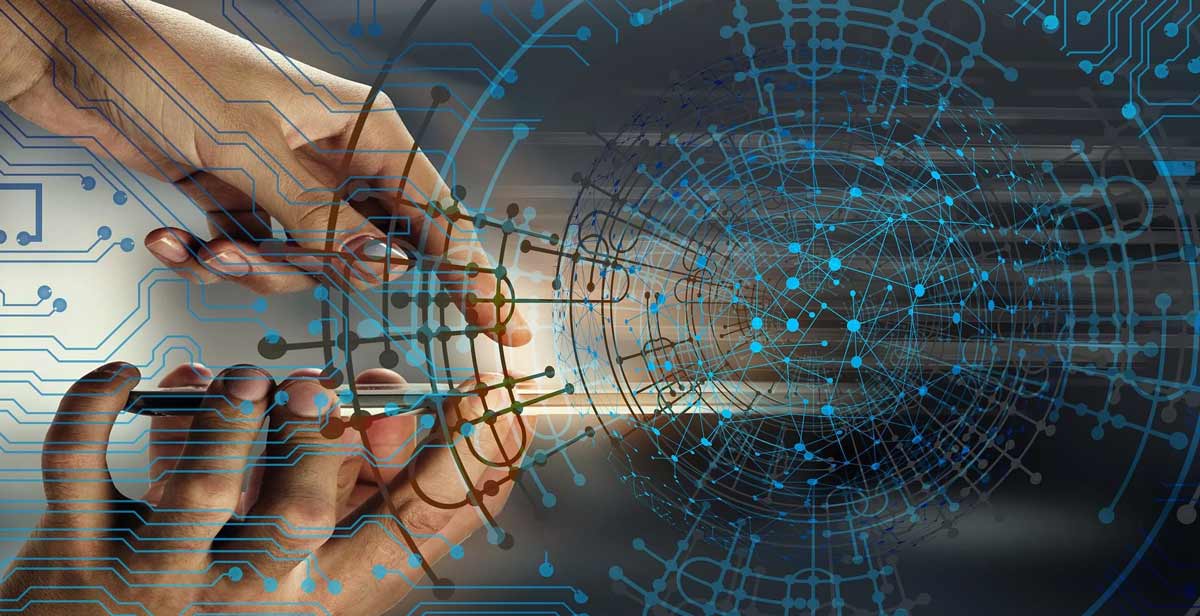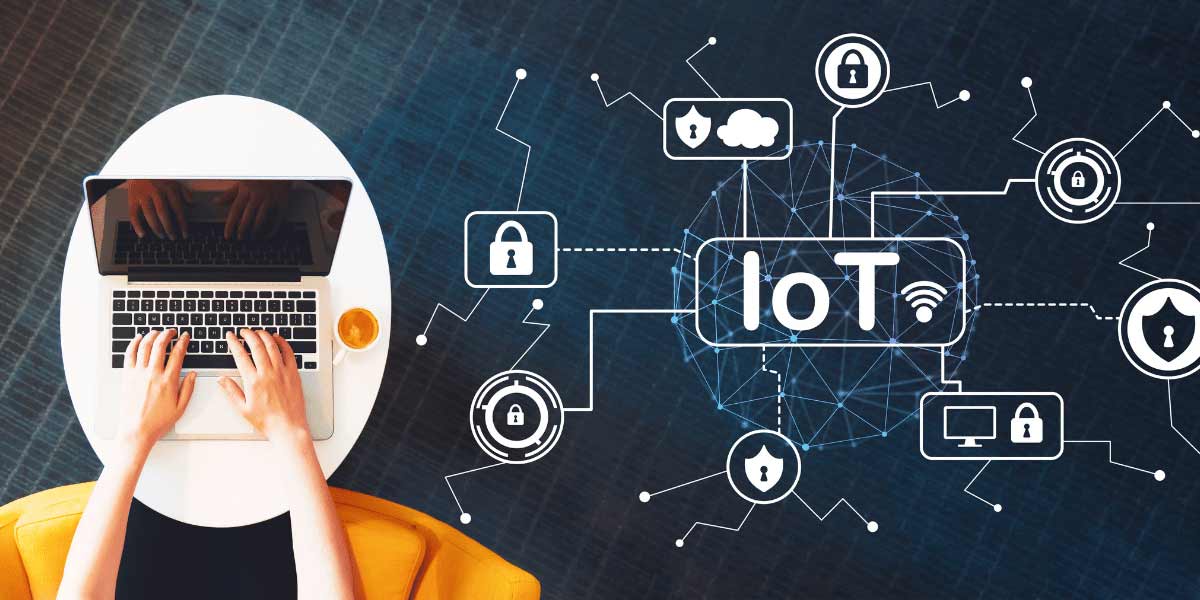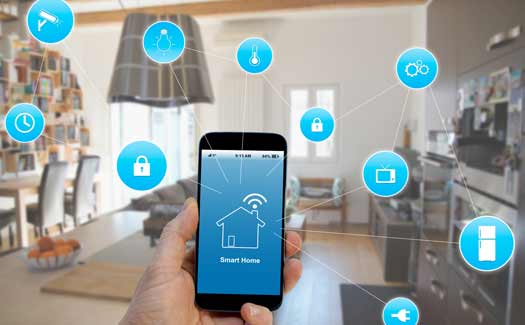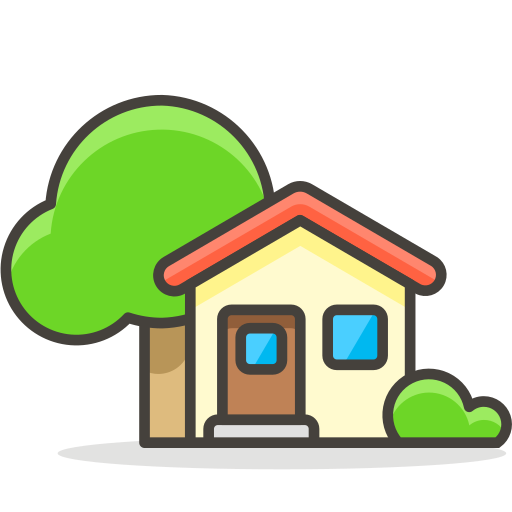The Role of IoT in Modern Houses: How Smart Technology is Reshaping the Way We Live (2025 Edition)
Part 1: The Foundation of Smart Living
Introduction: A Quiet Revolution at Home
Your smart blinds gradually roll up in the early morning light, according to your pre-programmed schedule. The scent of freshly brewed coffee fills the air as the sun shines down—your smart coffee maker just turned on a few minutes ago. In the meantime, a silent conductor—the Internet of Things (IoT)—has already synchronized your air purifier, thermostats, and water heater to your preferences.
Greetings from 2025. The smart home is now a fully functional ecosystem rather than just a sci-fi fantasy. Additionally, it is changing our perspective on life itself as well as how we live.
The enormous impact of IoT in contemporary homes will be covered in three comprehensive sections ,covering the following topics: technology, advantages, implementation, costs, privacy concerns, top trends, comparisons, guides, and future projections. First, let’s talk about the foundation.
What Is IoT and Why It Matters for Modern Homes
Definition of IoT
The term “Internet of Things” (IoT) describes a network of linked devices that are equipped with sensors, software, and connectivity to gather and share data without the need for human involvement.
This includes smart lighting, security systems, thermostats, refrigerators, and even faucets in a house that can communicate with you and each other.
Why Homes Need IoT in 2025
- Optimizing Energy
Connected thermostats like Nest or Ecobee change the temperature in real time based on how you use them and the weather. - Better Security: With smart locks, doorbells with cameras (like Ring), and motion-sensing lights, it’s easy to keep your home safe.
- Efficiency in Time and Tasks
IoT devices make everyday tasks easier, from robot vacuums to voice-controlled grocery lists. - Saving money and being environmentally friendly
Smart irrigation systems stop plants from getting too much water, and energy monitors find phantom power use. - Comfort & Personalization
Your home becomes a part of you, reacting to your moods, tastes, and schedule.

Connected Living: How IoT Transforms Modern Homes
Key Components of a Smart Home
1. Smart Hubs and Assistants
-
Amazon Alexa, Google Home, Apple HomeKit act as central brains.
-
Control via voice, app, or automation routines.
2. Smart Appliances
-
Refrigerators that alert you to expired food.
-
Washing machines that run only during off-peak hours.
-
Microwaves that scan barcodes to auto-set times.
3. Intelligent Lighting
-
Motion-sensor lights.
-
Circadian lighting that changes warmth through the day.
-
Remote dimming & mood settings.
4. Security & Access
-
Smart locks, facial recognition cameras, and video intercoms.
-
Geofencing to arm alarms automatically when you leave.
5. HVAC & Climate Control
-
Thermostats learn your habits.
-
Smart vents balance air flow room-by-room.
-
Integration with weather APIs.
How IoT Is Integrated into Home Design
IoT has redefined architectural thinking:
-
Wiring infrastructure: Planning for networked switches and outlets.
-
Dedicated IoT closets or hubs.
-
Open-concept layouts to facilitate surveillance and climate uniformity.
-
Minimalist design that hides smart tech inside walls and ceilings.
Modern builders now collaborate with IT specialists, not just interior designers.

A Glimpse Into a Fully Smart Home Powered by IoT
Benefits of IoT in Residential Spaces
Convenience and Automation
IoT does away with manual labor. As you get closer, the doors unlock. The temperature of your bath is just right. Automated grocery orders.
Improved Safety
-
Leak detectors prevent flooding.
-
Smoke alarms send mobile alerts.
-
Elderly fall sensors notify caregivers.
Energy Efficiency and Cost Savings
-
Homes with smart thermostats save 10–15% on heating and 15% on cooling.
-
Smart plugs and monitors cut phantom energy usage by 5–10% monthly.
Health & Wellness Tracking
-
Air quality sensors.
-
Sleep trackers integrated with lighting and temperature.
-
Smart kitchen scales and nutrition monitors.
Top 10 IoT Devices Transforming Homes in 2025
| Rank | Device | Function | 2025 Innovation |
|---|---|---|---|
| 1 | Nest Learning Thermostat v5 | Smart climate control | AI-driven seasonal adjustments |
| 2 | Ring Pro Secure | Doorbell cam + ID match | Full facial AI + law enforcement sync |
| 3 | Samsung Family Hub Fridge 2025 | Food management | Real-time food scanner & reorder |
| 4 | iRobot Roomba AI+ | Cleaning | Zone-specific tasking |
| 5 | Philips Hue Gen-5 | Lighting | Health-based brightness matching |
| 6 | August Smart Lock Ultra | Door security | Remote key-sharing with 2FA |
| 7 | LG Smart Mirror | Health tracking | Skin diagnostics & workout suggestions |
| 8 | Moen Smart Shower | Bathroom automation | Preset user profiles & voice control |
| 9 | Orro Smart Switch | Adaptive lighting | Energy-saver auto-mode |
| 10 | Wyze Cam Floodlight Pro | Outdoor security | Solar-powered, AI-patrolling |
Check official Wyze release for real-time feature list.
Use Case Scenarios
A Day in a Smart Home
-
6:30 AM – Smart alarm wakes you with sunlight and gentle music.
-
7:00 AM – Mirror gives weather, health stats, news headlines.
-
8:00 AM – Fridge updates shopping list and suggests dinner.
-
12:00 PM – Robot vacuum cleans according to dirt-detect algorithm.
-
5:00 PM – Lighting dims as per circadian rhythm.
-
9:00 PM – Doors lock, blinds shut, thermostat lowers temp.

Everyday Life in an IoT-Enabled Smart House
Privacy & Security Considerations
The Dark Side of Smart Homes
IoT’s biggest challenge is data privacy:
-
Smart cameras can be hacked.
-
Companies may sell behavioral data.
-
Unsecured devices can expose your entire network.
Best practices:
-
Always update firmware.
-
Use strong Wi-Fi passwords and VPNs.
-
Choose brands with transparent privacy policies.
Global IoT Home Market in 2025
According to Statista, the smart home market is expected to surpass $231 billion globally in 2025, with North America holding 38% of the share.
Top 3 Growth Regions:
| Region | Projected Growth 2025 |
|---|---|
| North America | +16% CAGR |
| Europe | +14.5% CAGR |
| Asia-Pacific | +18.7% CAGR |
Conclusion of Part 1: The Essential First Layer
Smart homes aren’t just about gadgets; they’re about making life better. IoT gets us closer to homes that can think, respond, and change with us. But as we build the foundation for smart living, we also need to teach people about data ethics, cost-effectiveness, and how to use technology responsibly.
Part 2:
From Smart Kitchens to Smarter Security — How IoT is Reimagining Daily Living
The Connected Kitchen: Where IoT Meets Culinary Convenience
Using Intelligence in Cooking
Smart kitchens are changing the way we interact with food, and they’re not just pretty. Ovens with IoT capabilities preheat remotely. Refrigerators reorder groceries when they detect food spoilage. Coffee makers use the information from your sleep tracker to brew your morning espresso.
However, automation is only one aspect of the change. For instance, Samsung’s Family Hub refrigerator shows recipes based on what’s inside in addition to managing inventory. With IoT coordinating sustainability, taste, and nutrition, the future of smart kitchens is about cooking smarter, not faster.
Key Components:
-
Smart Fridges: Inventory tracking, expiration alerts.
-
Connected Ovens: App control, camera-inside cooking.
-
IoT Scales & Nutrition Monitors: Auto-track macros.
-
Voice Assistants (Alexa/Google Home): Seamless recipe walkthroughs.
📊Stat Insight: As of 2024, over 37% of new kitchen appliance sales in the U.S. were smart-enabled (Statista).

Smart Hub Controlling All Home IoT Devices
Home Security Reinvented: IoT and Predictive Protection
Real-Time Monitoring and Response
Alarm triggers were the main focus of traditional home security. Preventive and predictive measures are the main goals of IoT security solutions. A learning network is made up of AI-analyzed behavior patterns, motion-detecting floodlights, and smart doorbell cameras.
Notable Devices:
-
Ring Doorbells and Eufy Smart Cameras.
-
ADT + Google Nest collaborative systems.
-
Geofencing: Arming/disarming based on location.
Integration is Key: Voice assistants, lighting, and even drones for aerial surveillance are all connected to these systems. The system notifies the homeowner and, in certain situations, the local authorities if it detects a possible threat.
Comparing Traditional vs. IoT-Based Security Systems
| Feature | Traditional Security | IoT-Enabled Security (2025) |
|---|---|---|
| Alarm Activation | Manual | Automated, predictive |
| Camera Access | DVR-based | Real-time via app |
| Response Time | Slow | Instant alerts + automation |
| Integration | Limited | Full home ecosystem |
| Remote Monitoring | Often absent | Standard feature |
🔒 Fun Fact: In 2025, 1 in 3 urban households globally will have at least one IoT-powered security device installed.
Energy Efficiency & Smart Thermostats
Lowering Expenses While Improving Comfort
Schedules are just one feature of smart thermostats (such as Nest or Ecobee). They optimize your HVAC system using machine learning, occupancy sensors, and weather data. They produce intelligent energy ecosystems when paired with smart lighting, ceiling fans, and blinds.
Why It Matters:
-
Lower utility costs.
-
Minimized environmental impact.
-
Greater comfort across seasons.
Emerging Trend: Grid-Responsive Homes
Real-time electricity pricing can now be responded to by IoT homes. Your house might pre-cool or postpone dishwasher cycles during busy times. Ten years ago, such grid cooperation was unheard of.

Smart Lighting Controlled by Voice Assistant
Smart Bathrooms: Privacy Meets Precision
Welcome to Sensor-Driven Hygiene
From self-cleaning toilets to mirrors that track your skin’s condition, IoT bathrooms are all about health, wellness, and personalization.
Key Devices:
-
Smart Showers: Preset temps, water-saving modes.
-
IoT Scales: Integrated with fitness apps.
-
Digital Faucets: Water-saving with usage analytics.
-
AI Mirrors (e.g., CareOS): Skin diagnostics, AR makeup trials.
Health Monitoring at Home
These days, toilets can identify urine glucose levels or dehydration, sending information to your health app. Bathroom scales that sync with wearables measure body composition. All of this information creates a personal wellness cloud that is accessible whenever needed.
🛁 Stat Snapshot: The smart bathroom market is projected to hit $13 billion by 2027, up from $4.5 billion in 2023.
Personalized Lighting & Atmosphere
Mood, Productivity, and Health
Lighting affects feelings in addition to illuminating. IoT-powered lighting systems, such as Philips Hue or LIFX, adjust color temperatures according to the time of day to increase efficiency or encourage rest.
Core Features:
-
Circadian Rhythm Syncing.
-
Voice/gesture control.
-
Scene presets (movie night, work mode, party).
Voice-Controlled Ambience
Lights, music, and even fragrance diffusers are activated when you say, “Alexa, put on cozy mode.” These minor adjustments result in a significant change in the way we emotionally engage with our surroundings.
Smarter Cleaning: From Roombas to Robot Mop Armies
Automated Housekeeping
One of the most outsourced jobs in the smart home is cleaning. Contemporary robot vacuums, such as iRobot’s Roomba j7+, self-empty, avoid pet messes, and map the house. Some even make reference to your calendar: “Cleaning begins after you leave for work.”
New Entrants:
-
Mopping robots (Ecovacs, Narwal).
-
Window-cleaning robots.
-
UV-C light sterilizers for bathroom/kitchen.
The combination of AI and IoT is turning homes into near-autonomous sanctuaries of cleanliness.

Futuristic Home Architecture Built Around IoT Systems
Seamless Entertainment: IoT in Media & Relaxation
Cinematic Experiences at Home
Nowadays, entertainment centers are the foundation of smart homes. IoT entertainment is immersive, from projectors that project images onto ceilings to speakers built into walls.
Elements to Consider:
-
Voice control for playlists and volume.
-
Multi-room audio sync (Sonos, Bose).
-
Smart TVs that suggest based on emotion (via wearables).
AR/VR Integration
Homes now feature mixed reality rooms—ideal for gaming, workouts, or virtual travel. The entertainment center is becoming the experience center.
Interconnectivity and User Ecosystem
The Power of Unified Platforms
The true magic of IoT isn’t isolated gadgets—it’s their interaction. Platforms like Apple HomeKit, Google Home, Amazon Alexa, and Samsung SmartThings serve as bridges between hundreds of devices.
Cross-Platform Flow Example:
-
Wake up → Smart blinds open.
-
Coffee brews → Playlist starts in kitchen.
-
Fridge reminds you of groceries → Car’s GPS updates shopping list.
-
While leaving → Home arms security, turns off HVAC, syncs to EV charging.
Future Trends to Watch:
-
Matter protocol: Universal device language.
-
Privacy-first homes: On-device data processing.
-
AI-led automation: Homes that learn your unspoken preferences.
IoT in Modern Homes – Part 3: Challenges, Costs & The Road Ahead
Real-Life Transformations: When IoT Meets Daily Living
Consider Sarah, a mother of three, waking up in a smart home. When her IoT-enabled sleep tracker detects that she is waking, it modifies the temperature and gradually turns off the lights. After checking her calendar and determining that she has a meeting in half an hour, her coffee maker begins to brew. When her milk supply is low, the refrigerator notifies her and recommends a substitute based on her family’s tastes. This is the reality of smart homeowners’ daily lives in 2025; it is not a fantasy.
The beauty of IoT is in these micro-moments—effortless, intuitive, and invisible.
But there’s another side we must address.
Privacy Concerns: Who’s Watching You?
As homes get smarter, so do the risks. One of the biggest concerns is data privacy.
-
Smart assistants record voices.
-
Security cameras upload footage to the cloud.
-
Appliances track behavior patterns.
🔒 Who owns this data?
🔒 Is it encrypted?
🔒 Can it be sold or hacked?
According to a 2025 report by Consumer Reports, nearly 68% of smart home devices had default credentials left unchanged by users—an open door to cyber threats.
Best Practices for Privacy in IoT Homes:
-
Change all default passwords immediately.
-
Enable two-factor authentication.
-
Use routers that offer built-in IoT firewalls.
-
Avoid devices that don’t clearly disclose data policies.

Introduction-The-Intersection-of-IoT-and-AI-Enhancing-Smart-Home-Experiences-DM-smartphone
Security Risks in Smart Homes
From baby monitors being hacked to garage doors opening unexpectedly, IoT breaches have real consequences.
Vulnerabilities Include:
-
Weak firmware updates
-
Open ports and unsecured Wi-Fi
-
Lack of end-to-end encryption
-
Data stored in non-GDPR-compliant countries
A report from Kaspersky Labs reveals a 37% year-over-year increase in smart home cyberattacks in 2025.
Mitigation Techniques:
-
Regular firmware updates
-
VPNs for IoT networks
-
Firewalled VLANs separating smart devices from primary networks
-
Monitoring logs with AI-based threat detection
Ethical Implications of Always-Listening Homes
When your home listens, observes, and sometimes makes decisions for you, new questions arise:
-
Is consent ongoing or one-time?
-
What happens to family members who didn’t agree?
-
Can AI bias creep into your home recommendations?
For example, if your AI vacuum avoids “messy” kids’ rooms due to past patterns, is it reinforcing behavioral bias in cleaning patterns?
While smart homes are incredibly helpful, we must ensure they don’t become echo chambers of algorithmic bias.
Comprehensive Cost Breakdown
Let’s look at average 2025 costs for IoT-based modern homes:
| System/Device | Initial Cost (USD) | Annual Maintenance | Expected Lifespan |
|---|---|---|---|
| Smart Thermostat (e.g. Ecobee) | $250 | $25 | 5–7 years |
| Smart Lights (Full Home) | $800–$2,500 | $50 | 8–10 years |
| IoT Security System | $1,000–$4,000 | $100–$300 | 5–7 years |
| Smart Kitchen (Fridge, Oven) | $4,000–$8,000 | $150–$400 | 10 years |
| Home Automation Hub (e.g. Homey) | $400 | $0–$50 | 5–7 years |
| Installation + Configuration | $1,000–$3,000 | One-time | — |

Select-Introduction iot in the smart homes
Comparison: Traditional vs IoT-Powered Homes
| Feature | Traditional Home | IoT-Integrated Home |
|---|---|---|
| Lighting | Manual | Automated & voice-controlled |
| Security | Locks, Cameras (manual) | AI cameras, motion sensors |
| Energy Usage | Often wasteful | Smart energy optimization |
| Appliance Control | Manual or remote only | App & AI-based decisions |
| Maintenance Alerts | Reactive | Predictive |
| Convenience | Moderate | Maximum |
Essential IoT Home Checklist for 2025
Before you dive into IoT integration, use this checklist:
✅ Strong, secure Wi-Fi with backups
✅ Dual-band router with VLAN support
✅ Smart Hub (e.g., Samsung SmartThings, Homey, Home Assistant)
✅ Devices with Matter or Thread compatibility
✅ Surge protection and battery backups
✅ Privacy-considerate device selection
✅ Central dashboard or mobile app
✅ Data control & backup solutions
✅ Support contract or technician access
✅ Awareness of local IoT laws

electromechanical-iot-smart-home-blog-header-525×325
FAQ – IoT in Smart Homes (2025 Edition)
Q1: Do IoT devices make my electricity costs go up?
A: They usually lower it. Energy consumption can be reduced by 10–30% with smart appliances, lights, and thermostats.
Q2: Do I need a technician to install IoT, or can I do it myself?
A: Do-it-yourself projects are effective for simple devices like plugs and lightbulbs. Employ certified professionals for whole-home systems.
Q3: What occurs if the internet in my smart home goes out?
A lot of gadgets are local. Make sure the systems you select have offline fallback modes.
Q4: What is an excessive number of IoT devices?
A: Your network determines this. Think about an IoT-specific VLAN or mesh Wi-Fi if you have more than 30 to 50 devices.
Q5: Is integrating AI required?
A: Very helpful, but not required. AI enables gadgets to recognize patterns, maximize efficiency, and detect irregularities.
The Final Word: Embracing the Future with Caution and Curiosity
IoT is revolutionizing how we live, but like any revolution, it comes with trade-offs. While your home may now greet you, brew your coffee, and close the blinds with a voice command, the power behind the scenes is both a marvel and a responsibility.
The home of the future is no longer a dream. It’s here. It’s alive. And it’s listening.
Are you ready to talk back?
🎥 Watch This: IoT Home Tour 2025 – How It Feels to Live in a Smart Home
🔗
📚 Primary Sources & Reports (2024–2025)
-
Statista – Smart Home Market 2025 Overview
https://www.statista.com/statistics/682204/worldwide-smart-home-market-value/
➤ Forecast of global smart home market size and segments through 2025. -
Gartner – IoT Trends and Predictions for 2025
https://www.gartner.com/en/articles/the-top-iot-trends-to-watch-in-2025
➤ Trusted forecasts on home automation, security, and predictive maintenance. -
Forbes – How IoT Will Reshape the Home in 2025
https://www.forbes.com/sites/forbestechcouncil/2024/11/23/how-iot-will-reshape-homes-by-2025/
➤ Industry insights and real-life applications of IoT in residential design. -
McKinsey & Company – IoT & the Future of Smart Living
https://www.mckinsey.com/industries/technology-media-and-telecommunications/our-insights/the-iot-opportunity-for-smart-homes
➤ Economic impact, connectivity standards, and sustainability metrics. -
IoT Analytics – State of the Smart Home Market 2025
https://iot-analytics.com/smart-home-market-update-2025/
➤ Data on consumer adoption, device categories, and vendor analysis. -
IEEE IoT Journal – Smart Home Systems: 2024–2025 Advances
https://ieeexplore.ieee.org/Xplore/home.jsp
➤ Peer-reviewed studies on IoT security, energy management, and AI integration. -
Wired Magazine – The Ethical Future of Connected Homes (2025)
https://www.wired.com/story/connected-home-privacy-and-ethics/
➤ Ethical considerations, data use, and home privacy concerns.
🔌 IoT in Practice – Product Ecosystems
-
Google Nest Ecosystem
https://store.google.com/us/category/nest_home
➤ Examples of real-time integration across thermostats, cameras, speakers, and sensors. -
Apple HomeKit – Smart Living Platform
https://www.apple.com/ios/home/
➤ Native integration, voice assistant usage, and privacy-focused IoT controls. -
Amazon Alexa & Ring Security Systems
https://www.amazon.com/smart-home-devices/
➤ Widely adopted tools for smart lighting, home security, voice controls, and automation.
🌐 Smart Homes & Sustainability
-
World Economic Forum – Sustainability through Smart Living (2024)
https://www.weforum.org/agenda/2024/10/smart-homes-net-zero-climate/
➤ How IoT contributes to climate goals and energy-efficient home design. -
U.S. Department of Energy – Smart Appliances & Energy Standards
https://www.energy.gov/eere/buildings/smart-home-technologies
➤ Policies and incentives for adopting energy-smart home technology in 2025.
🔐 Security, Privacy & Data Ethics
-
Electronic Frontier Foundation – IoT Surveillance in the Home
https://www.eff.org/issues/internet-things
➤ Privacy risks, data ownership, and policy recommendations. -
Kaspersky – IoT Security Threats in 2025
https://www.kaspersky.com/blog/iot-security-threats-2025/
➤ Emerging cyber risks and solutions in home IoT infrastructure. -
Consumer Reports – Best Smart Home Devices of 2025
https://www.consumerreports.org/smart-home/
➤ Rankings based on ease of use, privacy practices, and overall value.


